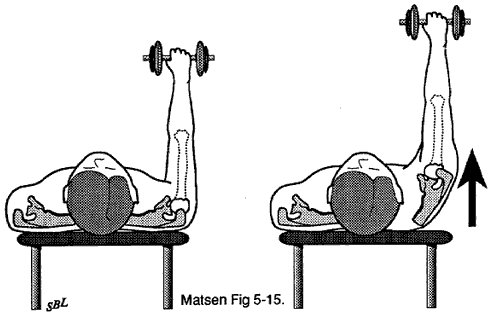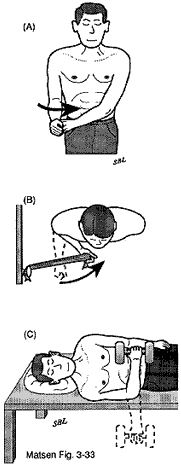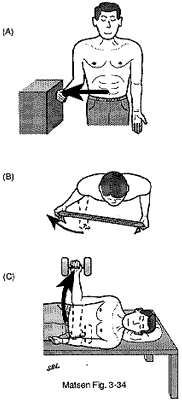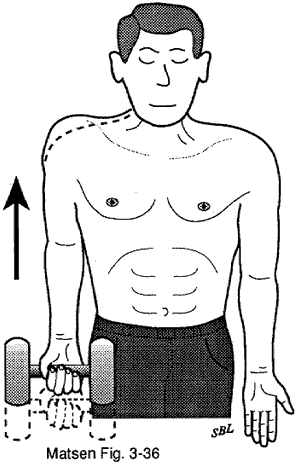See: The Shoulder Arthritis Book at
http://shoulderarthritis.blogspot.com/2011/03/what-is-difference-between-shoulder.html
See: The Rotator Cuff Tear Book at
http://shoulderarthritis.blogspot.com/2013/12/the-rotator-cuff-tear-book.html
Overview
Last updated: January 17, 2014
The strength of your shoulder depends on the coordinated working of several groups of muscles including the muscles of the rotator cuff the deltoid and pectoralis major and the muscles that power the shoulder blade.
http://shoulderarthritis.blogspot.com/2012/12/shoulder-exercises.html - Simple to follow rehabilitation exercises.
http://shoulderarthritis.blogspot.com/2011/04/total-shoulder-for-arthritis_20.html - Shoulder arthroplasty for arthritis: rehabilitation: early strengthening.
Optimize strength and coordination
The simple exercises described here are designed to help you optimize the strength and coordination of these muscle groups. Before beginning these exercises you should consult with your physician.
Strengthening and Coordination
One of the most important actions to strengthen a weak shoulder is forward elevation. The main exercises are illustrated below.
Supine press

Two Hands

Two Hands

One Hand

Inclined Press

Sitting Press

Press Plus
The nice thing about these exercises is that you can do them by yourself and can adjust your rate of progress according to what is most comfortable for you. The series proceeds in small steps. Start by lying on your back grasping a bar with both hands together. Push the bar straight up toward the ceiling. At the end of each push lift your entire shoulder off the bed or floor. When you can do this 20 times easily separate your hands an inch or so when you push the cloth toward the ceiling. This places slightly more of the load on the muscles of your weaker shoulder. As the exercise gets easier separate your hands more on the washcloth until you can push your hand toward the ceiling without any assistance from the opposite arm. Practice this exercise with nothing in your hand until you are able to repeat it 20 times. Then take an empty pint container and perform the same movement pushing it toward the ceiling. Add water to increase the resistance slowly. When the container is full of water the weight is about one pound. Make sure that with each press-up you end by lifting your shoulder blade up off the bed or floor. Be sure that you can perform the movement comfortably 20 times at each stage before advancing to the next stage. When you can press one pound toward the ceiling 20 times the next step is to perform the exercise with your back propped up slightly on pillows or by using a recliner or garden chair. When 20 comfortable repetitions are possible increase the degree to which your back is propped up. At each level push the shoulder all the way up: "press plus". Continue this process until you are able to push the one pound weight 20 times toward the ceiling in a sitting position. Work for smooth slow controlled motions. This program optimizes the mechanics of your shoulder and gives you the best chance of regaining good function.
You should add other strengthening exercises as your shoulder permits.
Rotator cuff strengthening exercises
Internal rotation

Internal Rotation

Isometrics

Tubing

Free Weight
External Rotation

External Rotation

Free Weight

Isometrics
Shoulder shrugs to strengthen trapezius

Shoulder shrug

Shoulder shrug
Other important strengthening exercises

Exercise and Arthritis:
Rhomboids

Exercise and Arthritis:
Flies

Exercise and Arthritis:
Stiff arm pull

Exercise and Arthritis:
Table push ups
Coordination exercises

Exercise and Arthritis:
Balance

Exercise and Arthritis:
Two hand catch
Fitness
Regular fitness exercise helps keep your joints supple. This "lubricating" effect is optimized if you perform a half-hour of aerobic exercise each day.
Variety of fitness exercises
This exercise may take a variety of forms including brisk walking, jogging, riding a stationary or mobile bicycle rowing, climbing stairs or using a cross-country skiing simulator. If you have concerns about your ability to carry out such an exercise program you should consult your general physician. It is not important that these exercises be carried out vigorously it is only important that in addition to the stretching program a half an hour of your day be devoted toward some form of aerobic exercise. A guideline for someone with a healthy heart lungs and blood pressure is to work up to 30 minutes of exercise at a target of two-thirds of his or her maximum heart rate. Your maximum heart rate is estimated by subtracting your age from 220. If you are over 35 and have not been exercising much or if you are not sure of your health you should consult your doctor before starting this aspect of the program.
If you have any questions about your shoulder or the proper treatment, let your doctor know.